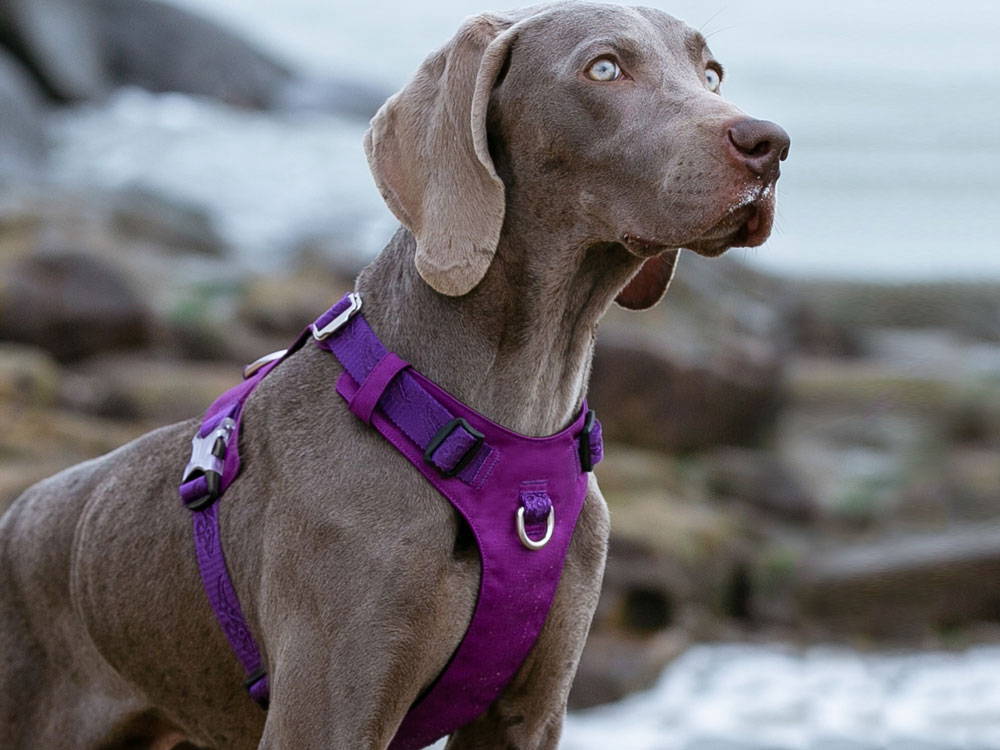No-Pull Dog Harness: Understanding the Key Features and Mechanics

Walking your furry friend should be a pleasant experience for both you and your dog. However, if your dog tends to pull on the leash, it can quickly become frustrating and even unsafe. To address this common issue, dog owners often turn to no-pull harnesses. But what exactly makes a no-pull dog harness work? In this article, we'll explore the key features that make these harnesses effective in curbing pulling behaviour and promoting a more enjoyable walking experience for both you and your canine companion.
Front Attachment Point
One of the defining characteristics of a no-pull dog harness is its front attachment point. Unlike traditional harnesses that attach on the back, a no-pull harness features a ring or attachment point located at the dog's chest area. This strategic placement allows you to gain better control over your dog's movements. When your dog tries to pull, the pressure from the leash is directed towards their chest, naturally redirecting their attention back to you. This discourages pulling behaviour and encourages your dog to walk alongside you.
Even Distribution of Pressure
Another important aspect of a no-pull dog harness is the even distribution of pressure. Pulling on a regular collar or traditional back-attached harness can put significant strain on your dog's neck, potentially leading to discomfort and injury. No-pull harnesses are designed to distribute the pressure more evenly across the chest and shoulders, reducing the risk of injury and providing a more comfortable experience for your dog. By avoiding unnecessary pressure on sensitive areas, these harnesses can effectively discourage pulling without causing harm.
Adjustable Straps and Fit
The fit of a no-pull harness is crucial to its effectiveness. Most no-pull harnesses come with adjustable straps, allowing you to customize the fit according to your dog's size and body shape. A properly fitted harness ensures that it stays in place during walks and prevents your dog from slipping out. When choosing a no-pull harness, make sure it offers a secure and snug fit without restricting your dog's movement or causing discomfort. Ensuring the right fit is essential for optimal control and comfort during walks.
Quality and Durability
A high-quality no-pull harness is built to withstand the rigors of regular walks and the pulling force of energetic dogs. Look for harnesses made from durable materials like nylon or reinforced stitching, which can handle the strain without fraying or breaking. Additionally, quality hardware, such as strong metal D-rings and sturdy buckles, ensures that the harness remains securely fastened throughout your walks. Investing in a well-constructed no-pull harness guarantees longevity and reliability, giving you and your dog many enjoyable walks together.
Positive Reinforcement
While not a physical feature of the harness itself, incorporating positive reinforcement techniques alongside the use of a no-pull harness can greatly enhance its effectiveness. Reward-based training methods, such as treats or verbal praise, can help reinforce desired behaviours and encourage your dog to walk politely without pulling. By associating the act of walking without pulling with positive experiences, you create a more enjoyable and cooperative environment for your dog.
Conclusion
No-pull dog harnesses provide an effective and humane solution for addressing pulling behaviour during walks. With their front attachment point, even pressure distribution, adjustable fit, quality construction, and positive reinforcement techniques, these harnesses empower dog owners to regain control and promote enjoyable walks for both them and their dogs. Remember, each dog is unique, so finding the right no-pull harness that suits your dog's specific needs is crucial. By incorporating the features mentioned above, you can set the stage for more pleasurable walks, strengthen your bond, and keep your dog safe and comfortable.
